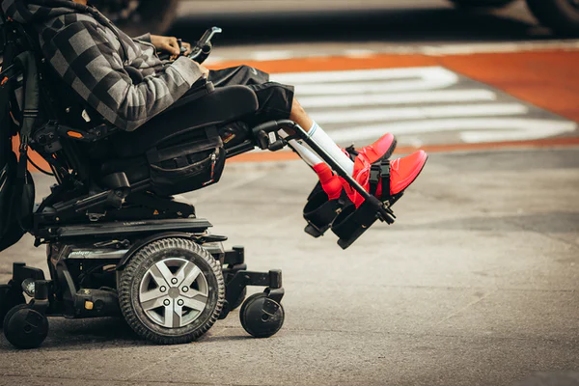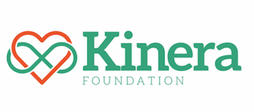 Every week, we have been sharing "Mindful Monday" tips on our Facebook and Instagram pages. The following is a summary of those posts for parents and caregivers looking to have these ideas in one place: Mindfulness practices allow more presence in our lives and connection with the people around us. By following the tips and advice below, families and individuals can facilitate calm and resilience each day. Not only does mindfulness help regulate our emotions, but these practices can help decrease stress, anxiety and depression. This will also lead to better decision-making skills, emotion management, and living a more engaged and fulfilling life. The best part? These practices are easy and simple additions to our everyday lives. In children, mindfulness can mitigate the effects of bullying, enhance focus in children, reduce attention problems, improve mental health and wellbeing, and improve social skills when taught and practiced with children and adolescents. Here are some activities that you can practice with your children: 1. Download Insight Timer App: This #1 free meditation app has guided meditations, music tracks from world-renowned artists and talks led by top mindfulness experts, neuroscientists, psychologists and teachers from top universities such as Harvard and Oxford. Learning meditation helps calm the mind, reduce anxiety, manage stress, sleep better, and improve happiness! 2. Watch Flow videos on GoNoodle: Flow is a channel on GoNoodle, a website that gets kids moving with short, interactive activities. Flow videos teach kids mindfulness exercise! 3. Create a “Mindful Glitter Jar”: This activity is great for teaching kids about how strong their emotions can be and how their emotions cloud their thoughts. It also facilitates the practice of mindfulness by focusing on the swirling glitter in the jar. 1. Get a clear jar, such as a mason jar, and fill it almost all the way with water. 2. Add a big spoonful of glitter glue or glue with dry glitter to the jar. 3. Put the lid back on the jar and shake it to make the glitter swirl. 4. Explain to kids: “Imagine that the glitter is like your thoughts when you’re stressed, mad or upset. See how they whirl around and make it really hard to see clearly? That’s why it’s so easy to make silly decisions when you’re upset- because you’re not thinking clearly. Don’t worry, this is normal and it happens in all of us (yep, grownups too). 5. Now put the jar down in front of them. 4. Download and print some mindful coloring pages or buy a mindful coloring book: When coloring, children shift their focus onto concentrating on their picture and the finished product. Coloring is a peaceful activity that has a therapeutic and calming effect on children. It can be an outlet for processing emotions and distracting them from challenging situations. By focusing on a simple activity that has a predictable outcome, anxious children are able to relax and live in the moment. 5.Breathe with a Pinwheel Activity: 1. Grab two pinwheels- one for yourself and one for your child. 2. Sit with your backs straight and bodies relaxed. 3. Blow on your pinwheels together using long, deep breaths, Notice how you feel - calm and relaxed? Having trouble sitting still? 4. Next, blow on your pinwheels with short, quick breaths. Notice how you feel again- do you feel the same as you did with the long, deep breaths? 5. Think about the different types of breathing you engaged in, and discuss how the different breaths made you feel.
0 Comments
 National Mobility Awareness Month is observed during the month of May. National Mobility Awareness Month encourages people with disabilities to embody the spirit of Life Moving Forward by raising awareness of the mobility solutions available in your community. The National Mobility Equipment Dealers Association (NMEDA) and MobilityWorks take part in celebrating the Annual National Mobility Awareness Month This year’s theme for Mobility Awareness Month encourages an international campaign to highlight how people with disabilities are able to overcome physical boundaries. May is all about celebrating independence and growing solutions to create fewer boundaries. Over 18 million people live with mobility issues. Among older Americans, mobility challenges are the most common disability. By raising awareness of mobility issues, the development of solutions is encouraged and progress is acknowledged. Mobility issues shouldn’t stop anyone from getting to their destination. People with disabilities can drive or ride in a safe and comfortable way through increasing developments in automotive equipment options and wheelchair accessible vehicles. Some of the developments include driving controls that allow you to operate foot pedals by hand and fully-converted wheelchair accessible vehicles. Check out the National Mobility Equipment Dealers Association to discover products so no one has to miss out on any moments or adventures. If you have a child with mobility issues, take the time this month to read about the different rights children with disabilities have in public schools. Accommodations should be readily available because of:
By educating ourselves on the rights available to those with disabilities and finding resources and equipment to help mobility, less obstacles will prevent people from living their lives to the fullest. Resources: www.NationalMobilityAwarenessMonth.com https://nmeda.org/mobility-awareness-month/ https://nmeda.org/nmam/ https://www.publicschoolreview.com/blog/beneficial-services-for-physically-disabled-students-in-schools After a year that was anything but normal, it's not surprising that many parents and educators are mentally exhausted from all things school-related. The entire world has been under an enormous mountain of stress for the past fourteen months and teachers, parents, and children all need a well-deserved mental break.
For many parents, the end of their child's school year can often bring about a huge sense of relief, because it means getting a break from the morning hustle, packing lunches, and having to sift through mountains of papers and emails every evening. However, for parents of children with special needs, it can also be a time of worry, especially when you consider that daily routines will be upended and relationships with certain teachers or administrators may be coming to an end. A reminder for parents and caregivers who may be limping towards the finish line this year: You are all superheroes! Notwithstanding the pandemic, IEP goals and 504 plans were still in effect for the 2020-21 school year, despite the seismic shifts to virtual or hybrid learning environments. Now is the time for you to get answers to these important questions: What worked for your child this year? What was left out or failed because of virtual and hybrid learning models? How were the goals affected or amended by constant change and a year of uncertainty? To help you finish the year strong, we've compiled some articles to guide you through gathering and organizing information about your child's progress in preparation for next year. Check these items off your to-do list so you can finally put a lid on the 2020-21 school year. Then, relax and enjoy the summer! Remember: NOW is the best time to get clarification from teachers and administrators, while everyone is engaged, dialed in, and has your child's progress at top of mind. 5 Survival Tips for the End-of-Year IEP Meeting Your Child’s Educational Rights While Crisis Planning for 504 and IEP Success in a Post-Pandemic World How to Work On Your Child’s IEP Goals Over the Summer |
AuthorWrite something about yourself. No need to be fancy, just an overview. Archives
June 2022
Categories
All
|
|
Kinera Foundation
115 Sallitt Dr., Suite C Stevensville, MD 21666 (Chesapeake Bay Business Park) Phone: 443-249-3126 Fax: 443-458-0446 Kinera Foundation is a 501(c)(3) Nonprofit organization |
|
Copyright © 2024
Kinera Foundation, Inc. All rights reserved |
|
|
|
